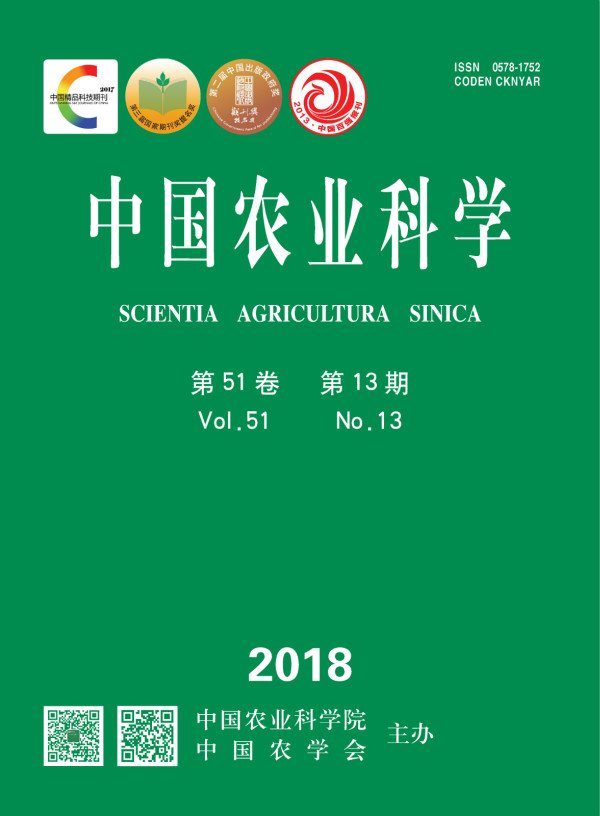-
Comprehensive Evaluation of Main Agronomic Traits of Millet Resources Under Different Light and Temperature Conditions
- JIA XiaoPing, YUAN XiLei, LI JianFeng, ZHANG Bo, ZHANG XiaoMei, GUO XiuPu, CHEN ChunYan
-
Scientia Agricultura Sinica. 2018, 51(13):
2429-2441.
doi:10.3864/j.issn.0578-1752.2018.13.001
-
 Abstract
(
428 )
Abstract
(
428 )
 HTML
(
29 )
HTML
(
29 )
 PDF (1084KB)
(
1064
)
PDF (1084KB)
(
1064
)
 Save
Save
-
References |
Related Articles |
Metrics
【Objective】To uncover the characteristics of photo-thermo reaction of spring millet and summer millet, screen out the suitable traits for foxtail millet photo-thermo sensitivity evaluation, ten main agronomic traits including heading date, plant height, number of leaves, panicle length, panicle diameter, branch number per panicle, grain number per branch, panicle weight, grain weight per panicle and 1000-grain weight of 100 spring millet materials, 60 summer millet materials were investigated in two locations of Hainan and Jilin with different photo-thermo conditions.【Method】Based on the survey data of ten traits from 100 spring millet materials, 60 summer millet materials in two locations for two consecutive years, three methods including variance analysis, regression analysis and path analysis between ten traits and comprehensive evaluation index D value of photo-thermo sensitivity, photo-thermo relative sensitivity comparison analysis of ten traits were performed to evaluate the photo-thermo sensitivity of ten traits of spring millets and summer millets.【Result】Variance analysis showed that ten traits of both spring millets and summer millets were significant difference between two different photo-thermo conditions (p<0.01), indicating the omnibearing effect of photo-thermo condition on spring millet and summer millet. The investigation values of heading date, plant height, number of leaves, panicle length, panicle diameter, branch number per panicle, grain number per branch, panicle weight, grain weight per panicle of both spring millets and summer millets in Jilin location were higher than that in Hainan location. On the contrary, the investigation value of 1000-grain weight under Jilin photo-thermo condition was lower than that under Hainan photo-thermo condition. Comprehensive evaluation index D value of photo-thermo sensitivity was constructed by principal component analysis, based on which regression analysis and path analysis were performed between ten traits and D value. The results showed that panicle weight, panicle length, grain weight per panicle and grain number per branch of spring millets had relatively high direct effect on D value in two investigation years, indicating a higher sensitivity of these traits to photo-thermo reaction. For summer millets, there was profound difference between two years, only panicle weight and panicle length had significant effect on D value, were sensitive to photo-thermo reaction in two years. By comparing the relative photo-thermo sensitivity of ten traits, it was found that panicle weight, grain weight per panicle, heading date, panicle length and branch number per panicle of spring millets were more sensitive to photo-thermo reaction than other traits in two years. Meanwhile, panicle weight, panicle length, heading date, branch number per panicle and number of leaves of summer millets were more sensitive to photo-thermo reaction than other traits in two years. Combining the results by D value regression analysis, path analysis, photo-thermo relative sensitivity analysis for two years, and the research results of rice, we could conclude that for spring millets, panicle weight, grain weight per panicle, panicle length, branch number per panicle heading date showed strong photo-thermo sensitivity, following them were number of leaves and plant height, panicle diameter and 1000-grain weight showed weak photo-thermo sensitivity. The photo-thermo sensitivity of grain number per branch was uncertain. For summer millets, panicle weight, panicle length, heading date, number of leaves and branch number per panicle showed strong photo-thermo sensitivity, panicle diameter, grain number per branch and 1000-grain weight showed weak photo-thermo sensitivity. The photo-thermo sensitivity of grain weight per panicle and plant height was uncertain. Panicle weight, panicle length and heading date were the mutual traits of spring millets and summer millets that showed strong sensitivity to photo-thermo reaction.【Conclusion】Spring millets and summer millets were both significantly affected by photo-thermo conditions. Panicle weight, panicle length and heading date of spring millets and summer millets were more sensitive to photo-thermo reaction, which were suitable index traits for photo-thermo sensitivity evaluation of foxtail millet. Number of leaves was suitable for photo-thermo sensitivity evaluation of summer millets. Plant height was not suitable for photo-thermo sensitivity evaluation of foxtail millet.









